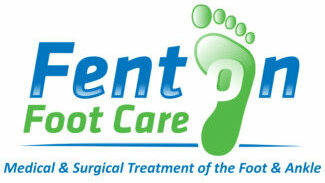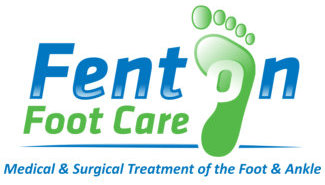[vc_row][vc_column][vc_column_text]
Symptoms
– Pain upon pressure at the top of the bent toe from footwear.
– The formation of corns on the top of the joint.
– Redness and swelling at the joint contracture.
– Restricted or painful motion of the toe joint.
– Pain in the ball of the foot at the base of the affected toe.
The treatment options vary with the type and severity of each hammertoe, although identifying the deformity early in its development is important to avoid surgery. Podiatric medical attention should be sought at the first indication of pain and discomfort, because if left untreated, hammertoes tend to become rigid, making a nonsurgical treatment less of an option.
Your podiatrist will examine and X-ray the affected area and recommend a treatment plan specific to your condition.
Padding and Taping:
Often this is the first step in a treatment plan. Padding the hammertoe prominence minimizes pain and allows the patient to continue a normal, active life. Taping may change the imbalance around the toes and thus relieve the stress and pain.
Medication:
Anti-inflammatory drugs and cortisone injections can be prescribed to ease acute pain and inflammation caused by the joint deformity.
Orthotic Devices:
Custom shoe inserts made by your podiatrist may be useful in controlling foot function. An orthotic device may reduce symptoms and prevent the worsening of the hammertoe deformity.
Surgical Options:
Several surgical procedures are available to the podiatrist. For less severe deformities, the surgery will remove the bony prominence and restore normal alignment of the toe joint, thus relieving pain.
Severe hammertoes, which are not fully reducible, may require more complex surgical procedures.
Recuperation takes time, and some swelling and discomfort are common for several weeks following surgery. Any pain, however, is easily managed with medications prescribed by your podiatric physician.
[/vc_column_text][/vc_column][/vc_row]
Hammertoe
What is a Hammertoe?
Symptoms
– Pain upon pressure at the top of the bent toe from footwear.
– The formation of corns on the top of the joint.
– Redness and swelling at the joint contracture.
– Restricted or painful motion of the toe joint.
– Pain in the ball of the foot at the base of the affected toe.
How Do You Get a Hammertoe?
What Will Your Podiatrist Do to Treat a Hammertoe?
The treatment options vary with the type and severity of each hammertoe, although identifying the deformity early in its development is important to avoid surgery. Podiatric medical attention should be sought at the first indication of pain and discomfort, because if left untreated, hammertoes tend to become rigid, making a nonsurgical treatment less of an option.
Your podiatrist will examine and X-ray the affected area and recommend a treatment plan specific to your condition.
Padding and Taping:
Often this is the first step in a treatment plan. Padding the hammertoe prominence minimizes pain and allows the patient to continue a normal, active life. Taping may change the imbalance around the toes and thus relieve the stress and pain.
Medication:
Anti-inflammatory drugs and cortisone injections can be prescribed to ease acute pain and inflammation caused by the joint deformity.
Orthotic Devices:
Custom shoe inserts made by your podiatrist may be useful in controlling foot function. An orthotic device may reduce symptoms and prevent the worsening of the hammertoe deformity.
Surgical Options:
Several surgical procedures are available to the podiatrist. For less severe deformities, the surgery will remove the bony prominence and restore normal alignment of the toe joint, thus relieving pain.
Severe hammertoes, which are not fully reducible, may require more complex surgical procedures.
Recuperation takes time, and some swelling and discomfort are common for several weeks following surgery. Any pain, however, is easily managed with medications prescribed by your podiatric physician.


